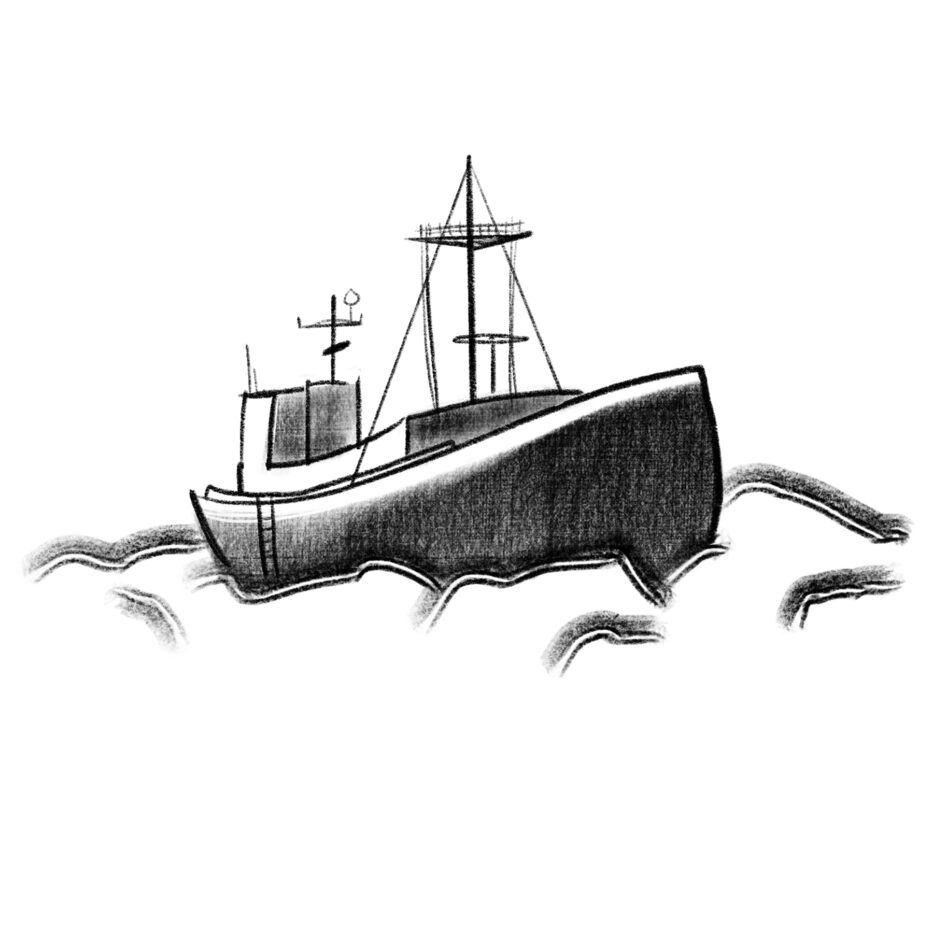
Image by Ivy Sanders Schneider

Image by Ivy Sanders Schneider
The ship rose up onto the ice, balanced there for a moment, and then lurched back onto its side. We were stuck. The open water had frozen, shutting us in place against a pressure ridge, a thick wall on the ocean’s surface formed by the convergence of sea ice.
Our vessel was called the Sikuliaq, and we were some 375 miles due north of Alaska, on a 30-day, 29-person research trip funded by the Department of Defense. If we couldn’t break through the ice ourselves, we would need the help of an icebreaker ship, of which the U.S. Coast Guard has exactly two. At the time, one was heading for Antarctica, and the other was docked in Maryland; both were unavailable until the spring thaw. Somewhere around hour four, a crewmember wondered out loud, “How much longer until we call the Russians?” Russia, as we all knew well, has at least 40 icebreakers.
Enlisting the Russians’ help would have been geopolitically fraught even then, months before the invasion of Ukraine. If a Russian ship did come to our rescue, we would have had to follow the Navy’s research security protocols and dump our laptops and hard-earned data overboard.
The Sikuliaq’s predicament may be a harbinger of the risks associated with ramping up Arctic activity during an era of rapid climate change. The Arctic is warming at more than twice the global average rate, summer sea ice cover has declined by nearly 40 percent since 1980, and by 2050, the Arctic Ocean is projected to be effectively ice-free in summer for the first time in most of human history. These drastic changes are escalating geopolitical interests in a region that is increasingly accessible for transportation and fossil fuel extraction. The U.S. is one of eight “sovereign Arctic States” on the Arctic Council, a quasi United Nations for countries and indigenous peoples with land in the Arctic Circle, and has close defense relationships with all the other member nations — Canada, Denmark (including Greenland), Iceland, Norway, Sweden, and Finland — except Russia. Despite having no Arctic territory, China recently declared itself a “near-Arctic” nation. Any incident in the Arctic Ocean — including oil spills, cargo-ship accidents, or even stranded scientists stuck in the sea ice — could disrupt the fragile region.
In our case, though, a crisis was averted. After six harrowing hours of backing and ramming, the ridge gave way. The Navy’s National Ice Center sent a stream of state-of-the-art satellite images revealing ice-compression risk zones, and we maneuvered to thinner ice and, days later, to open water.
Vince Cooper is a National Defense Science & Engineering Graduate Fellow (and PhD student) at the University of Washington.